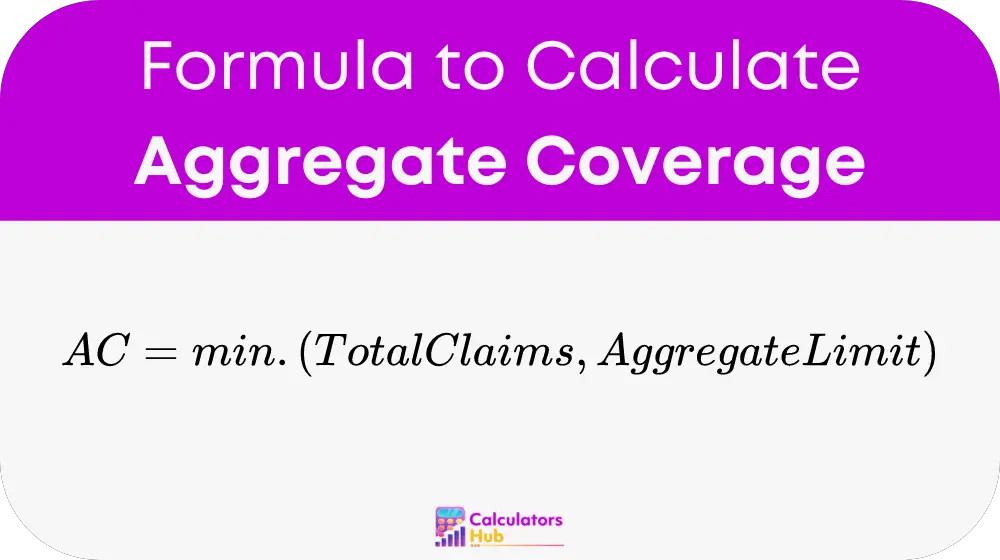The Aggregate Coverage Calculator provides an invaluable service by allowing users to evaluate the maximum amount that an insurance policy will pay out during a policy period, based on the total amount of claims submitted. This tool is particularly useful in scenarios where multiple claims may approach or exceed the policy's designated coverage cap.
Formula of Aggregate Coverage Calculator
The formula for calculating aggregate coverage is essential for accurate insurance management:

Explanation of Terms:
- Aggregate Coverage: The maximum payout by the insurer for all claims during the policy period.
- Total Claims: The combined value of all claims made during the policy period.
- Aggregate Limit: The maximum limit set by the insurance policy for the total payable claims during the policy period.
Detailed Calculation Steps:
- Identify the per-occurrence limit of the policy: This is the maximum amount the insurer will pay for a single claim.
- Determine the aggregate limit of the policy: This is the total coverage limit for all claims within the policy period.
- Calculate the total claims for the period: Sum up the costs of all claims filed during the period.
- Compare the total claims to the aggregate limit: This comparison determines whether the claims exceed the available coverage.
Table for General Terms
To assist in understanding the Aggregate Coverage Calculator, here is a table of general terms:
| Term | Definition |
|---|---|
| Per-Occurrence Limit | The maximum amount payable by the insurer for a single claim. |
| Aggregate Limit | The total coverage cap for all claims during the insurance policy period. |
| Total Claims | The sum of all claims made against an insurance policy during a specified period. |
| Aggregate Coverage | The maximum amount the insurer will pay for all claims in the policy period. |
Example of Aggregate Coverage Calculator
Imagine an insurance policy with an aggregate limit of $500,000 for the year. Throughout the policy period, the company files claims totaling $550,000.
Using the Aggregate Coverage Calculator:
- Aggregate Limit = $500,000
- Total Claims = $550,000
- Aggregate Coverage = minimum of ($550,000, $500,000) = $500,000
This means that the insurance will cover up to $500,000, and any amount exceeding this limit will not be covered under the current policy.
Most Common FAQs
If total claims exceed the aggregate limit, the policy will not cover claims that surpass the set limit. Policyholders may need additional coverage or a policy review.
Typically, aggregate limits are set at the inception of the policy and cannot be increased during the period without renegotiating the terms or purchasing additional coverage.
Yes, it is common in many types of liability insurance policies to have both types of limits to manage risk effectively.